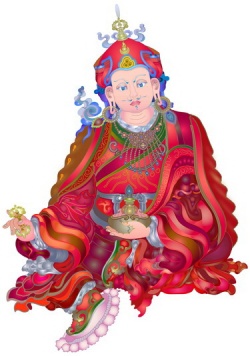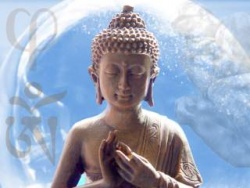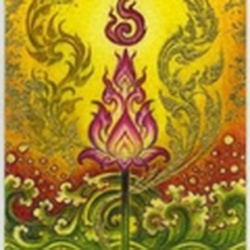The Three Afflictions: Ignorance, Attachment, Aversion
The Three Afflictions: Ignorance, Attachment, Aversion
One of the hardest question I get asked is "What is Buddhism about?" My own journey has been through personal development, some philosophy, psychotherapy and then into Buddhism. For me right now Buddhism is about finding a better way to live my life and come to grips with what doesn't work for me, at the same time finding ways I can be of service to other sentient beings. While we westerners might see it as taming the ego, Buddhists see it as a more active process called Mind Training.
Buddhist philosophy deals with the suffering created through our grasping at the concept of a separate and unique Self and the release from suffering in the ultimate reality of Non-Self. But that, like Emptiness, is a topic for further down the path.
The initial teachings deal with a whole bunch of issues we experience as human beings, many of which we are totally unaware or which totally consume us. The labels are familiar – anger, greed, craving, fear, avoidance, procrastination – on and on it goes.
If we choose to go down the Mahayana path, what we are choosing is to rediscover within ourselves a nature of loving kindness and compassion towards all sentient beings. It is through this we move towards the path of the bodhisattvas, working for the benefit of all sentient beings, and ultimately realising our own inherent Buddha nature.
In my initial years I was confused by the terminology. Were my problems the result of afflictions, poisons, obstructions or illusions? How many were there – 3? 5? 7? 84,000? How could I overcome them if I didn't know and understand what they were and how they applied to me? Then I came across teachings that talked about the 3, 5, 7, 10 or 84,000 antidotes to the afflictions. More confusion!
It came as a great relief to me one day to realise that I really only had to deal with three labels. Ignorance, Attachment and Aversion.
Ignorance can be summarised as "We don't know what we don't know!" The teachings are all aimed at gradually expanding our understanding of what is suffering, how we create our suffering and the paths available to us to address these conditions and move towards happiness. The fundamental Mahayana objective is the establishment of loving kindness and compassion as the basis of how we live our daily lives for the benefit of others. Dispelling ignorance is achieved by leading us to understand the afflictions or poisons of attachment and aversion.
I started to better understand attachment when I came to realise that there are many different ways we can experience it. Common labels are greed, craving, desire, selfishness. We may be attached to a desire for a variety of material things – cars, houses, objects. Then there are attachments to relationships or a desire to be admired or loved. Or we may become attached to an idea – "my religion is the only true religion" or "my race is the only worthy race". The suffering we experience manifests in many ways. When we don't have something, we suffer until we get it – and when we have it, we suffer in case we lose it. Resistance to change is a symptom of attachment. You can even have an attachment to having no attachments in that you may feel pride in your achievement and become attached to that pride.
By the way, there is a reason why you wouldn't get a Buddhist to vacuum your carpets – they don't vacuum in the corners because they have no attachments!
Likewise for aversion. Aversion manifests itself as anger, revulsion, hatred, dislike, fear and even indifference. Resistance to change is again a major indication that aversion may be playing a role in your life.
So – how can we apply the understanding that our suffering is generally about attachment or aversion? It is thought that in the process of getting through our busy days, 95% of the time we are in a neutral state, neither experiencing attachment or aversion. Seems to be somewhat a waste of time- or even a lifetime?
The first step is being open to awareness. If you are experiencing disturbing feelings, work out whether it is a form of attachment or aversion. If this is not clear, then sit with it, meditate on it, until it becomes clearer.
Once identified, you can then contemplate or meditate on what you have been taught on how to deal with it. For example, an antidote for greed is generosity. When you become aware that your current disquiet has an undercurrent of greed, contemplate or commit to an act of generosity. It may be a prayer for the happiness of all beings, a simple act of kindness or the giving of an offering of flowers or incense or a material gift. As you do this, observe what it is about that transformation from greed to generosity that makes you happier or eases the intensity of your suffering.
Repeated awareness of the nature of how you experience attachment and aversion and how you can transform those experiences to experiences of loving kindness and compassion will accumulate as training of the mind.
To use an expression I have heard, it is about habituation. We make a habit of practicing awareness and a habit of applying the antidote. Over time we habituate the practice of loving kindness and compassion. The afflictions of attachment and aversion are slowly shaken loose and we become more content in our circumstances as they are. The happiness we thus experience is real and lasting.
Keeping it simple should make it easier to focus on the awareness and practice, and not get caught up in trying to understand everything from the start.


